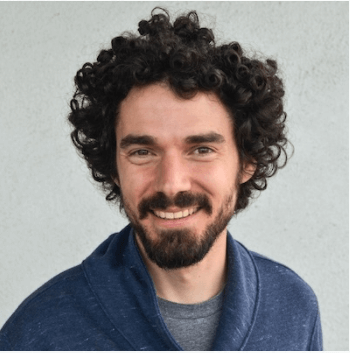
After working in robotics at MIT and NASA, engineer and Stanford University lecturer Mikey Siegel heeded a different calling: to create technology that helps people on their path toward self-actualization and awakening. Tech is here to stay, says Mikey, and now is the time to shift the paradigm and start using it in ways that support deep human connection.
In September, Esalen hosted Mikey for a month-long research project during which he developed and experimented with his latest piece of transformative technology: GroupFlow. We recently caught up with Mikey to discuss his time at Esalen and where the research is leading him.
Esalen News: What is GroupFlow?
Mikey: The GroupFlow technology platform can connect a group of up to 24 people at a time; it measures participants’ hearts and breath, and turns that information into sound, light and music.
One basic premise of the Esalen project is to see what it’s like to run the technology in a lab setting. We’ve never had it in one place to run lots of people through. We brought in seven different session facilitators from very different traditions ranging from Zen to tantra to dance to electronic music. We trained them in the technology, and then they created totally unique experiences for participants.
The facilitators were each working with the technology to enhance or expand the type of work they already do. The sessions were open to the whole Esalen community: staff, faculty and participants in other workshops on property.
Esalen actually was part of the birth of the GroupFlow technology. I had developed earlier versions, and about three years ago I got an email introduction to Cheryl Fraenzl, Esalen’s programs director. That started the conversation, and that’s when I saw the vision of what I wanted to build, and Esalen would be its debut. It took three years, but it actually happened! So I see Esalen as really the perfect testing grounds for spiritual innovation. I see that in its roots, and I still feel that energy and potential there.
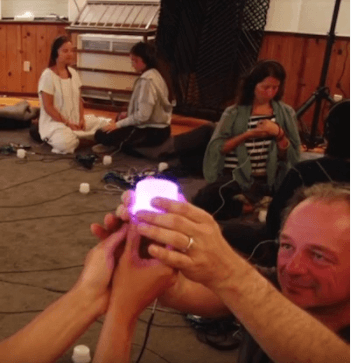
Esalen News: How did facilitators experiment with GroupFlow?
Mikey: Zen teacher Soryu Forall gave each person a light that represented their heart. In GroupFlow, the light can represent different things, and people can move it around and it can be different colors and pulse in different ways.
Soryu guided participants in silent meditation while each person listened to their own heart. Then, one at a time, people added their heart to the circle; when they added it, their heart would light up and their heartbeat would come through the PA system in the room. The room transitioned from silence to this really intense texture of 24 different heartbeats that reflects the interconnectedness of everyone in the room.
Intimacy experts Michaela Boehm and Steve James experimented with the tantric approach. They started with pairs working together where one person would hear the other person’s breath. GroupFlow has about 50 ways we can make the breath sound, and Michaela and Steve picked an angelic-sounding vocal harmony for the inhale and an om sound for the exhale. One person witnessing the breath is a very vulnerable kind of sharing. You don’t usually have people hearing your breath in that way. Then, the person whose breath is being witnessed guides their partner through a movement practice in synchrony with their breath.
Michaela, who is a longtime faculty at Esalen, said that what would normally take her a day or two of preparation to get people sensitive enough to sense each other’s breath or heartbeat, they were able to do within an hour. They loved the technology so much and found it so helpful that we’re already planning future collaborations.
Esalen News: What kinds of experiences did participants have with GroupFlow?
Mikey: A powerful experience that comes to mind is one man who had been clinically depressed and struggling with suicidal thoughts. He had what he called a life-changing experience. He was holding his heart in his hand as a light, and it made him realize how important the light of his heart is, the spark of his own heart. He said that he’s changed forever because of holding his heart in that way.
Esalen News: Can you share more about your research goals?
Mikey: After experimenting with a lab setting and inviting different facilitators to use the technology, the next level of the research is to evaluate: How meaningful and transformative of an experience is this? To what extent do people’s personalities and beliefs about technology influence their experience? We had questionnaires for before and after sessions that help us understand what participants’ beliefs are and how deep their experience was.
Then, the deepest level of research is trying to understand if there are relationships between peoples’ heart rate patterns and breathing patterns as they relate to how connected people feel — both to their group and to themselves. That’s really the deeper vision of the project, to understand the physiological rhythms in people’s bodies that correspond to a deeper sense of connection, and be able to develop that technology to the point that it can act as a harmonizer or conductor that guides the group into synchrony.
Ultimately what we’re talking about is understanding human connection. Right now there is an epidemic of loneliness. How can technology help people be more connected — not so we can send text messages and Facebook updates to each other – which has its usefulness, but it doesn’t satisfy the deeper need we have for connection. How can technology actually help us satisfy that deeper need.
Esalen News: What are your hopes for GroupFlow and the technology in general?
Mikey: In a broad sense, this technology can be very humanizing, which is something we don’t often see in technology. People often have the opposite experience. A big part of this project is exploring technology as a sacred tool or a spiritual tool, which is not the way we normally design technology or think of it.
The whole premise of my work is not only can technology play that role, but actually it needs to play that role for the ultimate flourishing of humanity. Because technology is so prevalent in our lives and culture, it has to be nourishing and supportive of a deeper human experience. Otherwise it’s playing the opposite role. It’s an unusual sentiment, partly I think because people don’t get that it’s possible and how much it’s needed. Technology is part of what is human. We can’t have humans without technology, starting with stone tools and fire. It’s a defining quality of humanness. What we need is actually nourishing technology, not no technology.
Learn more about Mikey’s work at http://mikeysiegel.com.
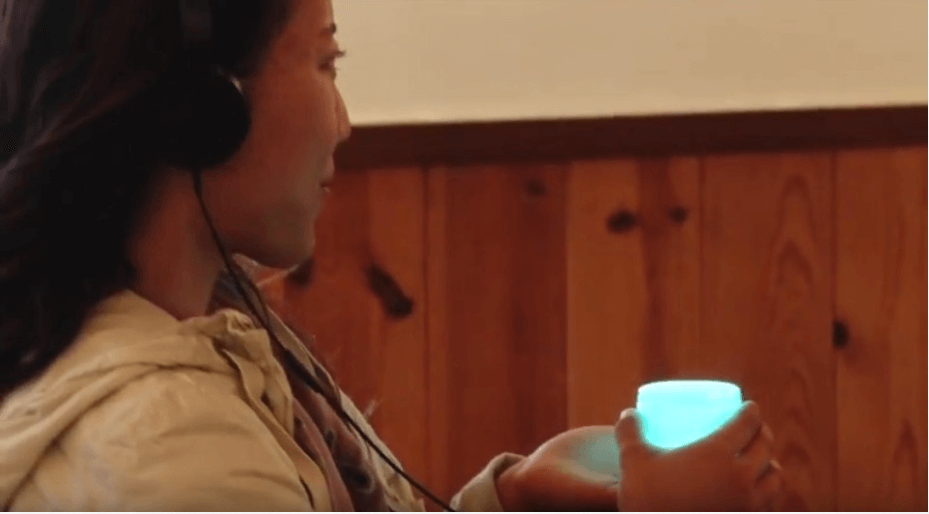
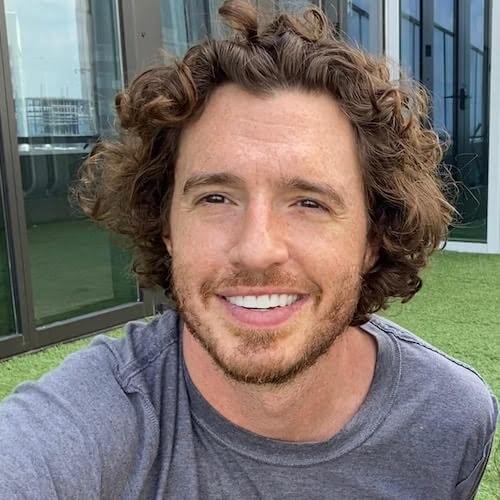
“Remembering to be as self compassionate as I can and praying to the divine that we're all a part of.”
–Aaron
“Prayer, reading, meditation, walking.”
–Karen
“Erratically — which is an ongoing stream of practice to find peace.”
–Charles
“Try on a daily basis to be kind to myself and to realize that making mistakes is a part of the human condition. Learning from our mistakes is a journey. But it starts with compassion and caring. First for oneself.”
–Steve
“Physically: aerobic exercise, volleyball, ice hockey, cycling, sailing. Emotionally: unfortunately I have to work to ‘not care’ about people or situations which may end painfully. Along the lines of ‘attachment is the source of suffering’, so best to avoid it or limit its scope. Sad though because it could also be the source of great joy. Is it worth the risk?“
–Rainer
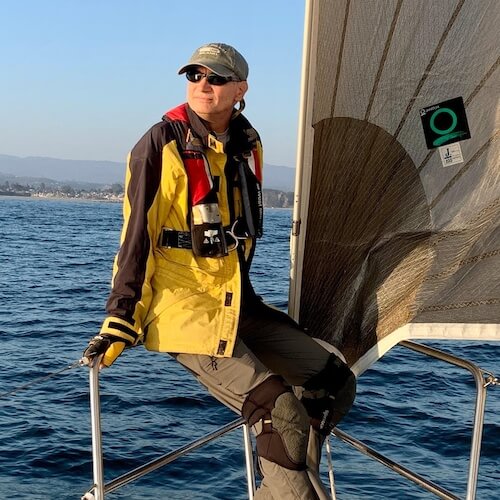

“It's time for my heart to be nurtured on one level yet contained on another. To go easy on me and to allow my feelings to be validated, not judged harshly. On the other hand, to let the heart rule with equanimity and not lead the mind and body around like a master.”
–Suzanne
“I spend time thinking of everything I am grateful for, and I try to develop my ability to express compassion for myself and others without reservation. I take time to do the things I need to do to keep myself healthy and happy. This includes taking experiential workshops, fostering relationships, and participating within groups which have a similar interest to become a more compassionate and fulfilled being.“
–Peter
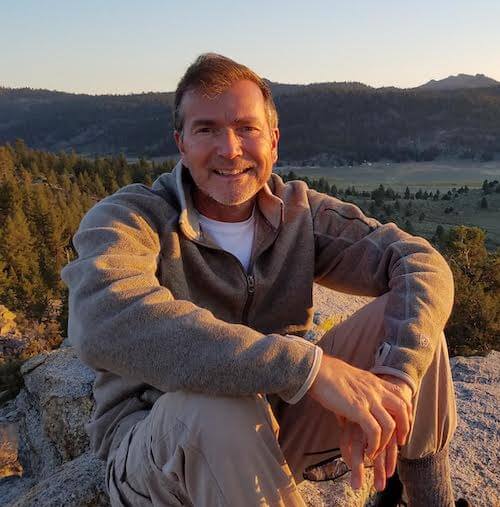
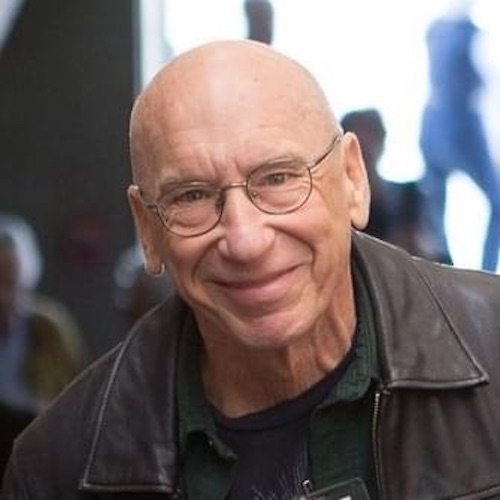
“Self-forgiveness for my own judgments. And oh yeah, coming to Esalen.”
–David B.
“Hmm, this is a tough one! I guess I take care of my heart through fostering relationships with people I feel connected to. Spending quality time with them (whether we're on the phone, through messages/letters, on Zoom, or in-person). Being there for them, listening to them, sharing what's going on with me, my struggles and my successes... like we do in the Esalen weekly Friends of Esalen Zoom sessions!”
–Lori

“I remind myself in many ways of the fact that " Love is all there is!" LOVE is the prize and this one precious life is the stage we get to learn our lessons. I get out into nature, hike, camp, river kayak, fly fish, garden, I create, I dance (not enough!), and I remain grateful for each day, each breath, each moment. Being in the moment, awake, and remembering the gift of life and my feeling of gratitude for all of creation.”
–Steven
“My physical heart by limiting stress and eating a heart-healthy diet. My emotional heart by staying in love with the world and by knowing that all disappointment and loss will pass.“
–David Z.
Today, September 29, is World Heart Day. Strike up a conversation with your own heart and as you feel comfortable, encourage others to do the same. As part of our own transformations and self-care, we sometimes ask for others to illuminate and enliven our hearts or speak our love language.
What if we could do this for ourselves too, even if just for today… or to start a heart practice, forever?

After working in robotics at MIT and NASA, engineer and Stanford University lecturer Mikey Siegel heeded a different calling: to create technology that helps people on their path toward self-actualization and awakening. Tech is here to stay, says Mikey, and now is the time to shift the paradigm and start using it in ways that support deep human connection.
In September, Esalen hosted Mikey for a month-long research project during which he developed and experimented with his latest piece of transformative technology: GroupFlow. We recently caught up with Mikey to discuss his time at Esalen and where the research is leading him.
Esalen News: What is GroupFlow?
Mikey: The GroupFlow technology platform can connect a group of up to 24 people at a time; it measures participants’ hearts and breath, and turns that information into sound, light and music.
One basic premise of the Esalen project is to see what it’s like to run the technology in a lab setting. We’ve never had it in one place to run lots of people through. We brought in seven different session facilitators from very different traditions ranging from Zen to tantra to dance to electronic music. We trained them in the technology, and then they created totally unique experiences for participants.
The facilitators were each working with the technology to enhance or expand the type of work they already do. The sessions were open to the whole Esalen community: staff, faculty and participants in other workshops on property.
Esalen actually was part of the birth of the GroupFlow technology. I had developed earlier versions, and about three years ago I got an email introduction to Cheryl Fraenzl, Esalen’s programs director. That started the conversation, and that’s when I saw the vision of what I wanted to build, and Esalen would be its debut. It took three years, but it actually happened! So I see Esalen as really the perfect testing grounds for spiritual innovation. I see that in its roots, and I still feel that energy and potential there.

Esalen News: How did facilitators experiment with GroupFlow?
Mikey: Zen teacher Soryu Forall gave each person a light that represented their heart. In GroupFlow, the light can represent different things, and people can move it around and it can be different colors and pulse in different ways.
Soryu guided participants in silent meditation while each person listened to their own heart. Then, one at a time, people added their heart to the circle; when they added it, their heart would light up and their heartbeat would come through the PA system in the room. The room transitioned from silence to this really intense texture of 24 different heartbeats that reflects the interconnectedness of everyone in the room.
Intimacy experts Michaela Boehm and Steve James experimented with the tantric approach. They started with pairs working together where one person would hear the other person’s breath. GroupFlow has about 50 ways we can make the breath sound, and Michaela and Steve picked an angelic-sounding vocal harmony for the inhale and an om sound for the exhale. One person witnessing the breath is a very vulnerable kind of sharing. You don’t usually have people hearing your breath in that way. Then, the person whose breath is being witnessed guides their partner through a movement practice in synchrony with their breath.
Michaela, who is a longtime faculty at Esalen, said that what would normally take her a day or two of preparation to get people sensitive enough to sense each other’s breath or heartbeat, they were able to do within an hour. They loved the technology so much and found it so helpful that we’re already planning future collaborations.
Esalen News: What kinds of experiences did participants have with GroupFlow?
Mikey: A powerful experience that comes to mind is one man who had been clinically depressed and struggling with suicidal thoughts. He had what he called a life-changing experience. He was holding his heart in his hand as a light, and it made him realize how important the light of his heart is, the spark of his own heart. He said that he’s changed forever because of holding his heart in that way.
Esalen News: Can you share more about your research goals?
Mikey: After experimenting with a lab setting and inviting different facilitators to use the technology, the next level of the research is to evaluate: How meaningful and transformative of an experience is this? To what extent do people’s personalities and beliefs about technology influence their experience? We had questionnaires for before and after sessions that help us understand what participants’ beliefs are and how deep their experience was.
Then, the deepest level of research is trying to understand if there are relationships between peoples’ heart rate patterns and breathing patterns as they relate to how connected people feel — both to their group and to themselves. That’s really the deeper vision of the project, to understand the physiological rhythms in people’s bodies that correspond to a deeper sense of connection, and be able to develop that technology to the point that it can act as a harmonizer or conductor that guides the group into synchrony.
Ultimately what we’re talking about is understanding human connection. Right now there is an epidemic of loneliness. How can technology help people be more connected — not so we can send text messages and Facebook updates to each other – which has its usefulness, but it doesn’t satisfy the deeper need we have for connection. How can technology actually help us satisfy that deeper need.
Esalen News: What are your hopes for GroupFlow and the technology in general?
Mikey: In a broad sense, this technology can be very humanizing, which is something we don’t often see in technology. People often have the opposite experience. A big part of this project is exploring technology as a sacred tool or a spiritual tool, which is not the way we normally design technology or think of it.
The whole premise of my work is not only can technology play that role, but actually it needs to play that role for the ultimate flourishing of humanity. Because technology is so prevalent in our lives and culture, it has to be nourishing and supportive of a deeper human experience. Otherwise it’s playing the opposite role. It’s an unusual sentiment, partly I think because people don’t get that it’s possible and how much it’s needed. Technology is part of what is human. We can’t have humans without technology, starting with stone tools and fire. It’s a defining quality of humanness. What we need is actually nourishing technology, not no technology.
Learn more about Mikey’s work at http://mikeysiegel.com.


“Remembering to be as self compassionate as I can and praying to the divine that we're all a part of.”
–Aaron
“Prayer, reading, meditation, walking.”
–Karen
“Erratically — which is an ongoing stream of practice to find peace.”
–Charles
“Try on a daily basis to be kind to myself and to realize that making mistakes is a part of the human condition. Learning from our mistakes is a journey. But it starts with compassion and caring. First for oneself.”
–Steve
“Physically: aerobic exercise, volleyball, ice hockey, cycling, sailing. Emotionally: unfortunately I have to work to ‘not care’ about people or situations which may end painfully. Along the lines of ‘attachment is the source of suffering’, so best to avoid it or limit its scope. Sad though because it could also be the source of great joy. Is it worth the risk?“
–Rainer


“It's time for my heart to be nurtured on one level yet contained on another. To go easy on me and to allow my feelings to be validated, not judged harshly. On the other hand, to let the heart rule with equanimity and not lead the mind and body around like a master.”
–Suzanne
“I spend time thinking of everything I am grateful for, and I try to develop my ability to express compassion for myself and others without reservation. I take time to do the things I need to do to keep myself healthy and happy. This includes taking experiential workshops, fostering relationships, and participating within groups which have a similar interest to become a more compassionate and fulfilled being.“
–Peter


“Self-forgiveness for my own judgments. And oh yeah, coming to Esalen.”
–David B.
“Hmm, this is a tough one! I guess I take care of my heart through fostering relationships with people I feel connected to. Spending quality time with them (whether we're on the phone, through messages/letters, on Zoom, or in-person). Being there for them, listening to them, sharing what's going on with me, my struggles and my successes... like we do in the Esalen weekly Friends of Esalen Zoom sessions!”
–Lori

“I remind myself in many ways of the fact that " Love is all there is!" LOVE is the prize and this one precious life is the stage we get to learn our lessons. I get out into nature, hike, camp, river kayak, fly fish, garden, I create, I dance (not enough!), and I remain grateful for each day, each breath, each moment. Being in the moment, awake, and remembering the gift of life and my feeling of gratitude for all of creation.”
–Steven
“My physical heart by limiting stress and eating a heart-healthy diet. My emotional heart by staying in love with the world and by knowing that all disappointment and loss will pass.“
–David Z.
Today, September 29, is World Heart Day. Strike up a conversation with your own heart and as you feel comfortable, encourage others to do the same. As part of our own transformations and self-care, we sometimes ask for others to illuminate and enliven our hearts or speak our love language.
What if we could do this for ourselves too, even if just for today… or to start a heart practice, forever?

After working in robotics at MIT and NASA, engineer and Stanford University lecturer Mikey Siegel heeded a different calling: to create technology that helps people on their path toward self-actualization and awakening. Tech is here to stay, says Mikey, and now is the time to shift the paradigm and start using it in ways that support deep human connection.
In September, Esalen hosted Mikey for a month-long research project during which he developed and experimented with his latest piece of transformative technology: GroupFlow. We recently caught up with Mikey to discuss his time at Esalen and where the research is leading him.
Esalen News: What is GroupFlow?
Mikey: The GroupFlow technology platform can connect a group of up to 24 people at a time; it measures participants’ hearts and breath, and turns that information into sound, light and music.
One basic premise of the Esalen project is to see what it’s like to run the technology in a lab setting. We’ve never had it in one place to run lots of people through. We brought in seven different session facilitators from very different traditions ranging from Zen to tantra to dance to electronic music. We trained them in the technology, and then they created totally unique experiences for participants.
The facilitators were each working with the technology to enhance or expand the type of work they already do. The sessions were open to the whole Esalen community: staff, faculty and participants in other workshops on property.
Esalen actually was part of the birth of the GroupFlow technology. I had developed earlier versions, and about three years ago I got an email introduction to Cheryl Fraenzl, Esalen’s programs director. That started the conversation, and that’s when I saw the vision of what I wanted to build, and Esalen would be its debut. It took three years, but it actually happened! So I see Esalen as really the perfect testing grounds for spiritual innovation. I see that in its roots, and I still feel that energy and potential there.

Esalen News: How did facilitators experiment with GroupFlow?
Mikey: Zen teacher Soryu Forall gave each person a light that represented their heart. In GroupFlow, the light can represent different things, and people can move it around and it can be different colors and pulse in different ways.
Soryu guided participants in silent meditation while each person listened to their own heart. Then, one at a time, people added their heart to the circle; when they added it, their heart would light up and their heartbeat would come through the PA system in the room. The room transitioned from silence to this really intense texture of 24 different heartbeats that reflects the interconnectedness of everyone in the room.
Intimacy experts Michaela Boehm and Steve James experimented with the tantric approach. They started with pairs working together where one person would hear the other person’s breath. GroupFlow has about 50 ways we can make the breath sound, and Michaela and Steve picked an angelic-sounding vocal harmony for the inhale and an om sound for the exhale. One person witnessing the breath is a very vulnerable kind of sharing. You don’t usually have people hearing your breath in that way. Then, the person whose breath is being witnessed guides their partner through a movement practice in synchrony with their breath.
Michaela, who is a longtime faculty at Esalen, said that what would normally take her a day or two of preparation to get people sensitive enough to sense each other’s breath or heartbeat, they were able to do within an hour. They loved the technology so much and found it so helpful that we’re already planning future collaborations.
Esalen News: What kinds of experiences did participants have with GroupFlow?
Mikey: A powerful experience that comes to mind is one man who had been clinically depressed and struggling with suicidal thoughts. He had what he called a life-changing experience. He was holding his heart in his hand as a light, and it made him realize how important the light of his heart is, the spark of his own heart. He said that he’s changed forever because of holding his heart in that way.
Esalen News: Can you share more about your research goals?
Mikey: After experimenting with a lab setting and inviting different facilitators to use the technology, the next level of the research is to evaluate: How meaningful and transformative of an experience is this? To what extent do people’s personalities and beliefs about technology influence their experience? We had questionnaires for before and after sessions that help us understand what participants’ beliefs are and how deep their experience was.
Then, the deepest level of research is trying to understand if there are relationships between peoples’ heart rate patterns and breathing patterns as they relate to how connected people feel — both to their group and to themselves. That’s really the deeper vision of the project, to understand the physiological rhythms in people’s bodies that correspond to a deeper sense of connection, and be able to develop that technology to the point that it can act as a harmonizer or conductor that guides the group into synchrony.
Ultimately what we’re talking about is understanding human connection. Right now there is an epidemic of loneliness. How can technology help people be more connected — not so we can send text messages and Facebook updates to each other – which has its usefulness, but it doesn’t satisfy the deeper need we have for connection. How can technology actually help us satisfy that deeper need.
Esalen News: What are your hopes for GroupFlow and the technology in general?
Mikey: In a broad sense, this technology can be very humanizing, which is something we don’t often see in technology. People often have the opposite experience. A big part of this project is exploring technology as a sacred tool or a spiritual tool, which is not the way we normally design technology or think of it.
The whole premise of my work is not only can technology play that role, but actually it needs to play that role for the ultimate flourishing of humanity. Because technology is so prevalent in our lives and culture, it has to be nourishing and supportive of a deeper human experience. Otherwise it’s playing the opposite role. It’s an unusual sentiment, partly I think because people don’t get that it’s possible and how much it’s needed. Technology is part of what is human. We can’t have humans without technology, starting with stone tools and fire. It’s a defining quality of humanness. What we need is actually nourishing technology, not no technology.
Learn more about Mikey’s work at http://mikeysiegel.com.


“Remembering to be as self compassionate as I can and praying to the divine that we're all a part of.”
–Aaron
“Prayer, reading, meditation, walking.”
–Karen
“Erratically — which is an ongoing stream of practice to find peace.”
–Charles
“Try on a daily basis to be kind to myself and to realize that making mistakes is a part of the human condition. Learning from our mistakes is a journey. But it starts with compassion and caring. First for oneself.”
–Steve
“Physically: aerobic exercise, volleyball, ice hockey, cycling, sailing. Emotionally: unfortunately I have to work to ‘not care’ about people or situations which may end painfully. Along the lines of ‘attachment is the source of suffering’, so best to avoid it or limit its scope. Sad though because it could also be the source of great joy. Is it worth the risk?“
–Rainer


“It's time for my heart to be nurtured on one level yet contained on another. To go easy on me and to allow my feelings to be validated, not judged harshly. On the other hand, to let the heart rule with equanimity and not lead the mind and body around like a master.”
–Suzanne
“I spend time thinking of everything I am grateful for, and I try to develop my ability to express compassion for myself and others without reservation. I take time to do the things I need to do to keep myself healthy and happy. This includes taking experiential workshops, fostering relationships, and participating within groups which have a similar interest to become a more compassionate and fulfilled being.“
–Peter


“Self-forgiveness for my own judgments. And oh yeah, coming to Esalen.”
–David B.
“Hmm, this is a tough one! I guess I take care of my heart through fostering relationships with people I feel connected to. Spending quality time with them (whether we're on the phone, through messages/letters, on Zoom, or in-person). Being there for them, listening to them, sharing what's going on with me, my struggles and my successes... like we do in the Esalen weekly Friends of Esalen Zoom sessions!”
–Lori

“I remind myself in many ways of the fact that " Love is all there is!" LOVE is the prize and this one precious life is the stage we get to learn our lessons. I get out into nature, hike, camp, river kayak, fly fish, garden, I create, I dance (not enough!), and I remain grateful for each day, each breath, each moment. Being in the moment, awake, and remembering the gift of life and my feeling of gratitude for all of creation.”
–Steven
“My physical heart by limiting stress and eating a heart-healthy diet. My emotional heart by staying in love with the world and by knowing that all disappointment and loss will pass.“
–David Z.
Today, September 29, is World Heart Day. Strike up a conversation with your own heart and as you feel comfortable, encourage others to do the same. As part of our own transformations and self-care, we sometimes ask for others to illuminate and enliven our hearts or speak our love language.
What if we could do this for ourselves too, even if just for today… or to start a heart practice, forever?